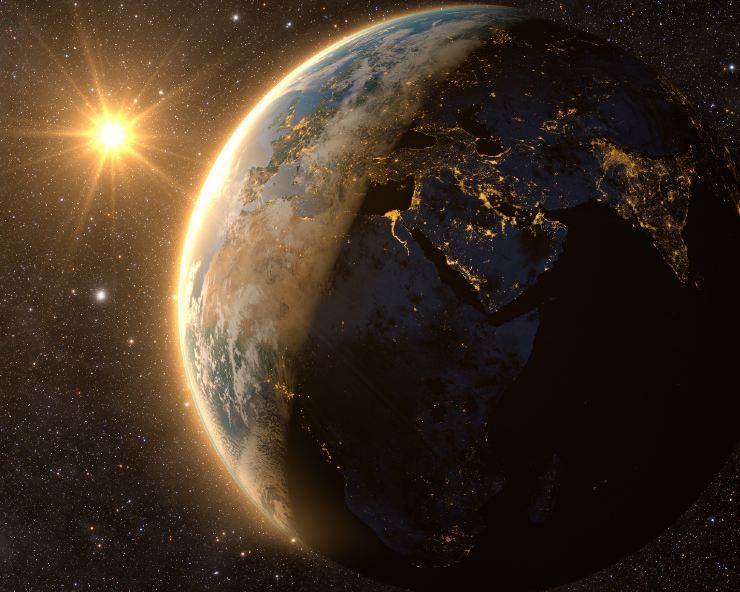Earth is spinning faster than ever, made a new record for the shortest day

On June 29, the day was not of 24 hours. The Earth completed its rotation on its axis in less than 1.59 milliseconds and thus proved to be the shortest day ever. Less than a month after this, i.e. on July 26, the Earth took less than 1.50 milliseconds to complete its rotation on its axis.
The Independent newspaper has published a report, according to which the speed of the Earth’s rotation on its axis has increased. In 2020 too, Earth had set the record for the shortest day since the 1960s. That year on July 19, the day was 1.4602 milliseconds shorter than 24 hours. The report says that even in 2021, the speed of Earth’s rotation was fast but it did not set any new record.
The reason for the acceleration of the Earth’s speed has not been given at the moment, but some scientists have said that the activities happening in the womb of the Earth may be the reason for this. Some scientists have even said that climate change may be the reason for this.
According to the Independent, if the Earth continues to accelerate in this way, a new negative leap second may be needed so that the clocks can be kept according to the speed of the Sun. But this negative leap second can cause disturbances in the clocks of smartphones, computers and other communication systems. Quoting a ‘meta blog’, the newspaper wrote that while leap second may be beneficial for scientists and astronomers, it is a ‘dangerous tradition with less advantages and more disadvantages’.
This is because the clocks go to 23:59:60 after 23:59:59 and then start again at 00:00:00. This change in time can crash computer programs and corrupt the data as this data is saved with a time stamp.
Meta has also stated that if a negative leap second is introduced, the clocks will go straight to 00:00:00 after 23:59:58, which can have a ‘disastrous effect’. According to ‘Interesting Engineering’, to solve this problem, ‘drop seconds’ will have to be added to the international timetables.
Concept of leap second
If leap seconds are added, it will not be the first time. The Coordinate Universal Time (UTC) based on which clocks around the world run has been replaced by leap seconds 27 times. In fact, until a few years ago, it was thought that the speed of the Earth’s rotation on its axis is decreasing. This was assumed until 1973 after the calculations done with the atomic clock.
After this, the International Earth Rotation and Reference Systems Service (IERS) started adding leap seconds, which was done for the 27th time on 31 December 2016. Some scientists say that if seen in the long run, it is possible that the speed of the Earth on its axis is slowing down. One reason for believing this is the Moon’s gravity, which pulls the Earth towards itself, causing its speed to slow down. Due to this gravity, the Earth revolves around the Sun not in a circular way but in a flat path.
Where the stars were born
The Southern Ring Nebula is a expanding cloud of gas that surrounds a dying star. Its diameter is equal to half a light year. Nebula is the place where a star is born.
The Southern Ring Nebula is a expanding cloud of gas that surrounds a dying star. Its diameter is equal to half a light year. Nebula is the place where a star is born.
But some atomic clocks have changed the concept that the speed of the earth is slowing down. The estimation of these clocks is quite the opposite, that is, the speed is increasing. On this basis, Interesting Engineering has said that maybe a 50-year long period of short days is starting.







